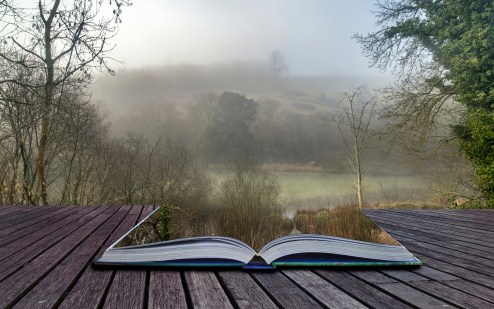How to write a novel: looking for trouble
Step 4: Award-winning novelist, Lucy Atkins, says this month’s task is to probe your characters and their circumstances, and turn up the heat

Conflict is the muscle of all good fiction: dilemmas and unresolved questions; secrets and lies; power struggles; contradictions; thwarted desires. No novel is strong without it.
By now you’ll have been making notes of images, themes, characters and locations that interest you. You’ll have drafted some fleeting, possibly disconnected, scenes. You’ll have done a lot of imagining and have a sense of the ‘fictional world’ you want to explore. You might even have a plot outline, or at least a vague idea of where you’ll go.
The page-turner
Conflict is human, universal and compelling. It’s also what makes your reader stay up until 2am to get to the last page. It can be obvious and intense – perhaps a clash between two characters, or an unrequited love. It can be circumstantial: how will your mountain climber make it home now that his Sherpa guide is dead? And it can be internal. The poet, Robert Browning, said writers must be interested in, ‘The dangerous edge of things… The honest thief, the tender murderer, the superstitious atheist.’
The most fascinating conflicts are those that lie deep in the heart of your characters. So, look at them and ask: where’s the trouble? Where are their contradictions, dilemmas, weak points, and inconsistencies? What makes them odd or compelling? These are the ideas to develop.
What should she do?
External circumstances can heighten internal conflicts, and settings can be particularly fertile for this. In my novel, The Missing One, Kal, emotionally adrift after her mother’s death, rashly takes her child to a remote island to find Susannah, a stranger who knew her mother. As Susannah’s behaviour becomes more sinister, Kal’s internal conflict rises: if she leaves, she’ll never find out the truth about her mother but, if she stays, Susannah could be dangerous. As Kal decides to leave, a storm rolls in, cutting them off from the mainland. Conflict is at its most powerful when it is internal and external, and they work hand in hand.
So, start to make trouble for your characters. Play around, put them in challenging, fraught, or uncertain situations. Explore how they react, think, do, say or feel. Whether the conflict lies in quiet, deeply felt yearnings in a hushed tea room, or the loud drama of a crime scene, one thing’s certain – it’s your job to find it, work at it, and make it potent.
Lucy Atkins is running our FREE ‘how to write a novel’ course on https://www.instagram.com/psychologiesmagazine/ every Friday at 1.30pm
Lucy is an award-winning author, journalist, Sunday Times book critic and Costa Prize judge who tutors at Oxford University’s Creative Writing Master’s degree course. Lucy has written four novels: The Missing One (£7.99), The Other Child (£7.99) and The Night Visitor (£14.99, all Quercus) and her fourth novel, MAGPIE LANE, a literary thriller in which the daughter of an Oxford College Master goes missing, is just out – to rave reviews. Buy the book here: https://blackwells.co.uk/bookshop/product/Magpie-Lane-by-Lucy-Atkins-author/9781786485571
@lucyatkinswriter
www.lucyatkins.com
Photograph: iStock









